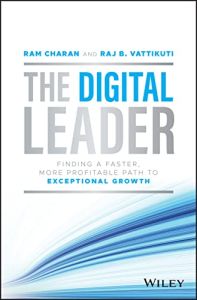Join getAbstract to access the summary!

Join getAbstract to access the summary!
Ram Charan and Raj Vattikuti
The Digital Leader
Finding a Faster, More Profitable Path to Exceptional Growth
Wiley, 2022
What's inside?
Learn how to digitalize your business inexpensively and efficiently.
Recommendation
Businesses need to adopt digital technology to compete, but leaders worry that the shift will be costly and will throw legacy practices into disarray. To take your business through a digital transformation that’s efficient, inexpensive and straightforward – and delivers tangible results – Ram Charan and Raj Vattikuti advocate working with a “digital enabler,” a company that understands both your business and cutting-edge technologies. The authors explain how to apply their principles to concrete cases, but, they note, it’s not new technology that transforms a business; it’s how executives lead the newly digitalized company.
Summary
About the Authors
Ram Charan is also the author of Talent: The Market Cap Multiplier; What the CEO Wants You to Know: How Your Company Really Works; and Boards that Lead: When to Take Charge, When to Partner, and When to Stay Out of the Way, among other titles that he wrote or co-wrote. Raj B. Vattikuti is executive chairman of Altimetrik, a digital business accelerator.


































Comment on this summary